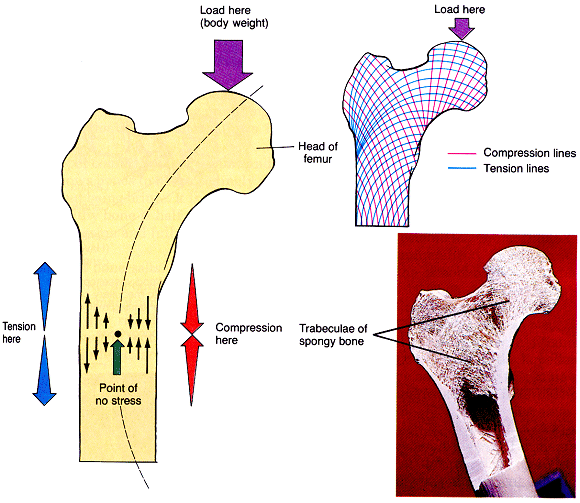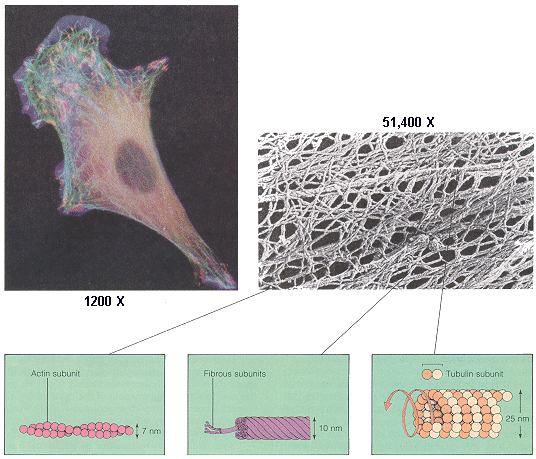"the internal human
framework is a triumph of design and engineering"
Human Anatomy, 2nd Ed., by Marieb & Mallatt, Addison Wesley, 1996, p. 140
| steel | 450 | 20 |
| bone | 200 (compression) 135 (tension) 70 (shear) |
18 |
| tendon | 50 - 150 | 1.2 - 1.8 |
| concrete | 4.5 (compression) | 2.8 |
| wood | 3.6 | 0.14 |
Cells...over 75 trillion in the human body
cytoskeleton filaments
Muscles
100-500 mm - fascicle 50-300 mm - fibroblasts 500-5000 A - fibril 100-200 A - sub-fibril 35 A - micro-fibril 15 A - tropo-collagen "The Multicomposite Structure of Tendon" by J. Kastelic
Bones
- organic fibers - tension, torsion, and shear loading
- inorganic salt matrix - compression loading

fibrous, laminar, particulate,
and porous structure
at different size scales
200 mm - Haversian osteon 10 mm - lamellae 1 mm - collagen fiber 100 nm - hydroxyapatite, collagen fibril 1 nm - collagen molecule "Materials with Structural Hierarchy" by RS Lakes

The trabeculae of spongy bone align precisely along stress lines. Spongy bone is not a random network of bone fragments, but an organized pattern of tiny struts. (p124) The small-scale architecture of our bones constantly changes. The distal region of the femur is fully replaced every 5 to 6 months. (p130) Bone is remodeled in response to the mechanical stress it experiences. For example, both the osteons of compact bone and the trabeculae of spongy bone are constantly replaced by new osteons and trabeculae that are more precisely parallel to newly experienced compressive stresses. Furthermore, bone grows thicker in response to the forces of exercise and the force of gravity. (p131) At birth, all bones are relatively smooth and featureless. However, as the child uses its muscles more and more, the bones develop projections and other markings. (p134)


